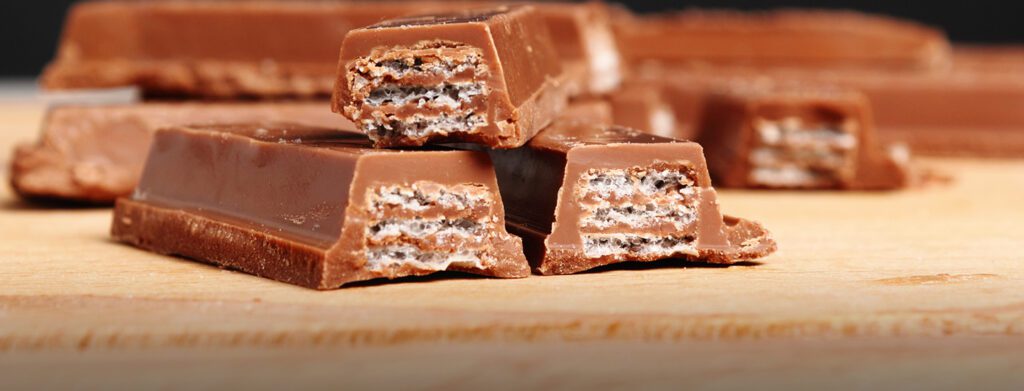Societe des Produits Nestle SA (“Nestle”) v Cadbury UK Ltd (“Cadbury”)
In a decade-long trade mark battle between the two confectionary giants, Nestle has previously thwarted Cadbury’s attempts at registration (and thus exclusive use) of its synonymous ‘purple’ wrapping colour.
Cadbury has now sealed its own return victory however; by successfully challenging Nestle’s right to register its four-fingered KitKat shape as a trade mark.
Nestle’s trade mark application was originally accepted by the United Kingdom Intellectual Property Office (the “IPO”) in 2011. But, following opposition by Cadbury, the IPO examiner determined that the trade mark was, in fact, ‘devoid of inherent distinctive character and had not acquired such character’, despite the shape having remained largely unchanged since its introduction in 1935. Registration was therefore denied.
On appeal by Nestle, the case was referred by the High Court to the Advocate General (the “AG”) for the Court of Justice of the European Union (the “Court”) for clarification on a number of key questions on the interpretation of Directive 2008/95/EC of the European Parliament (the “Trade Marks Directive”).
In finding against Nestle, the key points to note from the AG’s decision are:
- It is not sufficient to show that a trade mark is recognisable and associated with the goods to the ‘average consumer’ (Nestle had cited a survey in which 90% of persons questioned associated a picture of the KitKat bar shape with the product). The applicant must instead prove that a trade mark indicates the exclusive origin of the goods concerned, without any possibility of confusion.
- If used in conjunction with another trade mark (i.e. the KitKat logo embossed onto its bars), the trade mark in question must be capable of fulfilling the function of identifying the origin of the goods in its own right.
- Where the essential features of a trade mark (three in the case of the KitKat shape – the rectangular slab shape, the grooves which divide the bars to create fingers and the number of grooves) are found to fall within a prohibition of Article 3(1)(e) of the Trade Marks Directive, it does not matter if those features engage three separate grounds for refusal and none fall within all of the Article restrictions, provided that at least one of the grounds for refusal fully applies to that shape.
- Where the Trade Marks Directive prohibits registration of a trade mark for ‘signs which consist exclusively of the shape of goods which is necessary to obtain a technical result’, this is not only with regard to the manner in which goods function, but also to the manner in which they are manufactured.
The aim of this is to prevent trade mark owners from being afforded a monopoly on technical solutions or characteristics, which consumers may also wish to seek in the products of competitors.
The Court’s judgment is not expected until later in the year but it is probable that the AG’s findings will be adopted. The High Court will then be guided by the Court, meaning Nestle’s application will likely be rejected.
Registration thresholds for 3D ‘shape’ trade marks have always been high. On the back of this decision however, expect more IPO/court scrutiny and challenges over trade mark applications of this nature.
Of course, it is unlikely that the AG’s decision (or any subsequent Court or High Court ruling) will bring the long-running Nestle / Cadbury tit-for-tat to a rest. Actions relating to Nestle’s Community Trade Mark application (for the same product but for registration within the European Union as a whole) and registration for its two-finger KitKat shape remain pending. These actions are likely to be resumed following the outcome of the preliminary ruling. We will keep you updated.
The full Advocate General’s decision can be found here.

